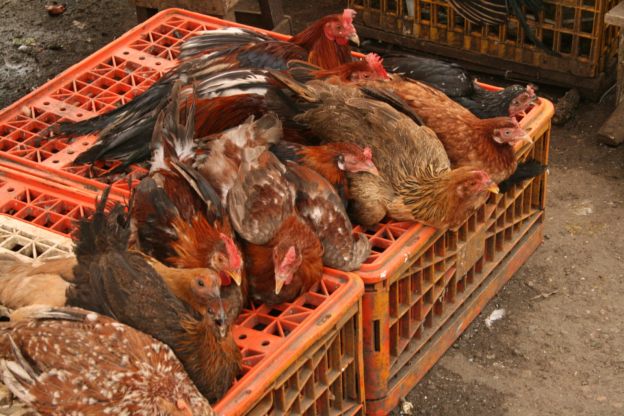
The Chinese government has its fingers in just about every government press outlet in China; it’s a tightly controlled state and as is widely known, the media is regulated. But thanks to the proliferation of social media platforms like Weibo, it’s hard to maintain total control.
Recently the Avian flu has sparked a flurry of interest and speculation among netizens in China. New concerns are springing up about a brand new strain of the Avian influenza – technical name N7N9 – and reportedly six people have died from this flu, with 15 confirmed cases as of this writing. To make matters worse, signs are pointing toward a good chance that this bird flu is transmissible between humans.

To China’s credit, the government did take precautions and on April 1 officially announced the existence of H7N9, which expected stirred Weibo netizens. Parallels were quickly drawn between the “sudden” spread of H7N9 and the 16,000 or more pig carcasses discovered buried in Shanghai’s Huangpu River, Shanghai’s source of tap water. Despite testing and evidence supporting China’s denial that the pig deaths had anything to do with the H7N9 outbreak, speculation ran rampant. In fact The Economic Observer reports that a purported administrative director at Nanjing Drum Tower Hospital published a report on a patient (which you can see at right), a chicken butcher in fact, who tested positive for H7N9 on March 30. This was posted to Weibo, but quickly taken down.
China’s censors swooped in and promptly deleted the post, but the damage was done. It’s difficult to detect what will or won’t go viral, so by the time the post trended and the government found out, it has been republished elsewhere and spread throughout the Internet, beyond even China’s censoring powers. Interestingly enough, on April 3 Xinhua reported four new cases of Avian Flu and among the victims named included that chicken butcher.
Even though the Web and social media in China have gotten a hold of the information, efforts to contain news about the epidemic persist. FluTrackers, a site that tracks diseases, has reportedly been the subject of hacking attempts originating in China, says Reuters.

More damning stories will inevitably pop up on Weibo regularly, and censoring Chinese citizens will continue to be a never-ending game of cat and mouse between the government and Internet users. We can’t say for certain what the government’s motives are, but it’s obvious that for whatever reason China wants to keep these reports from the general public’s view.
[Photo credit: laughlin]


